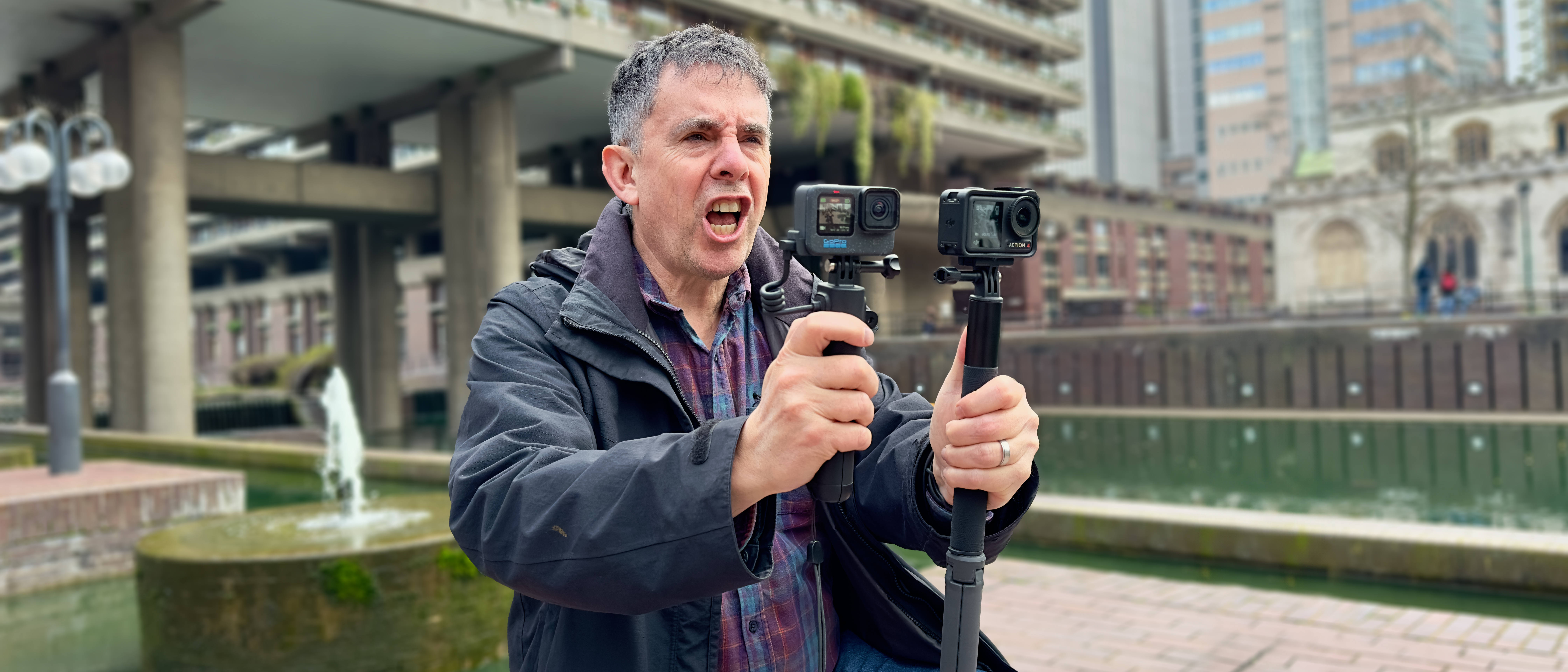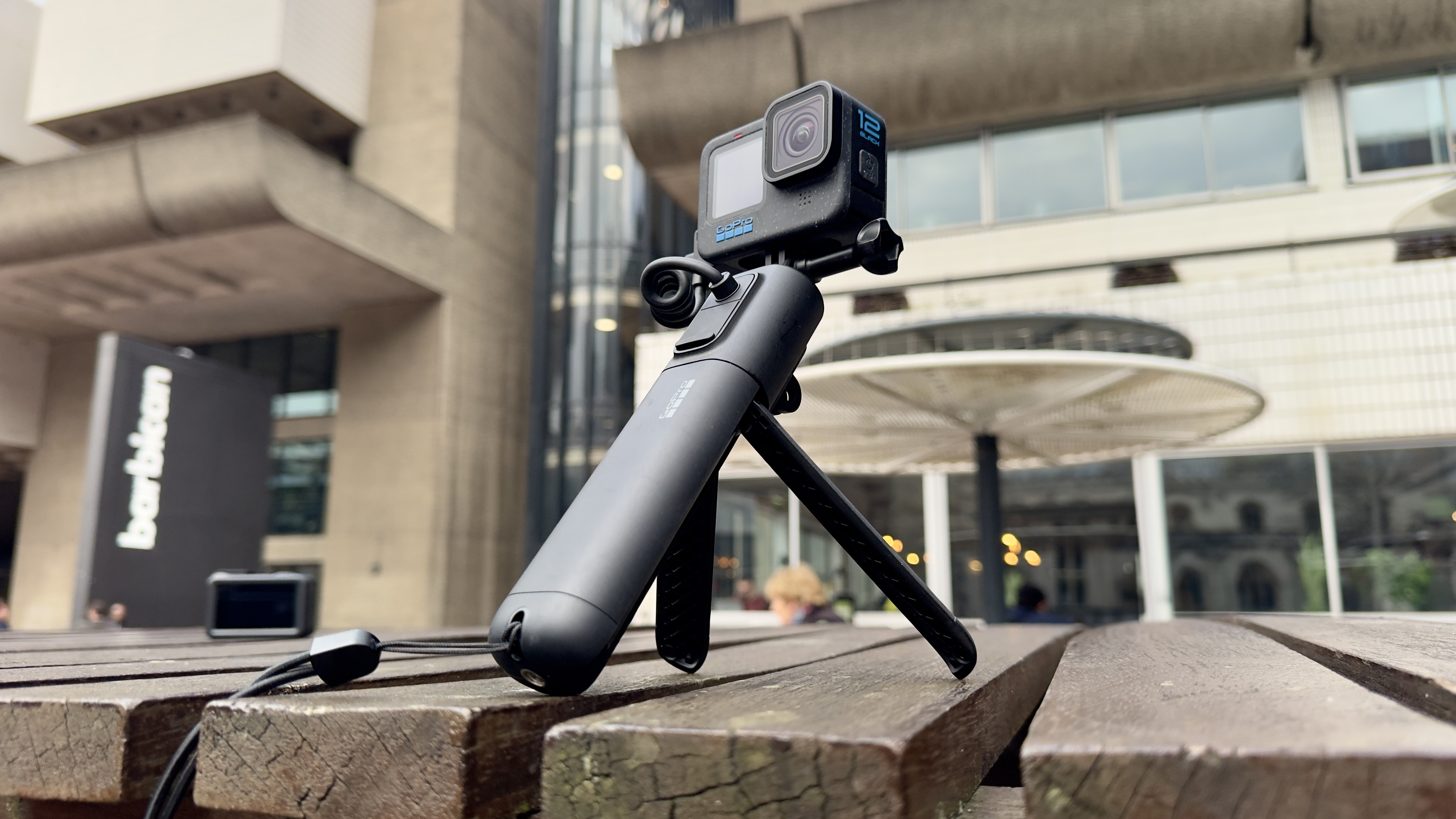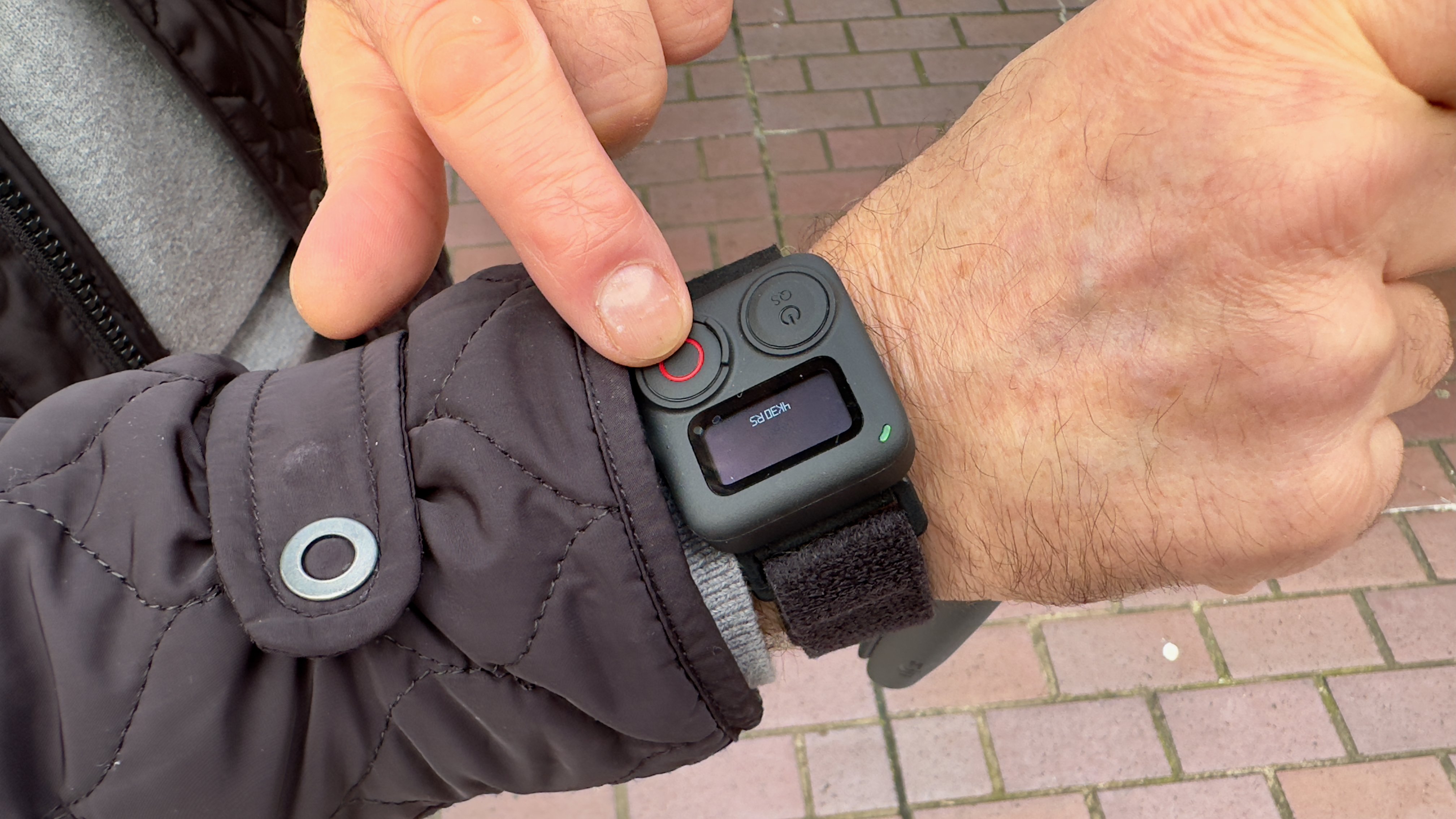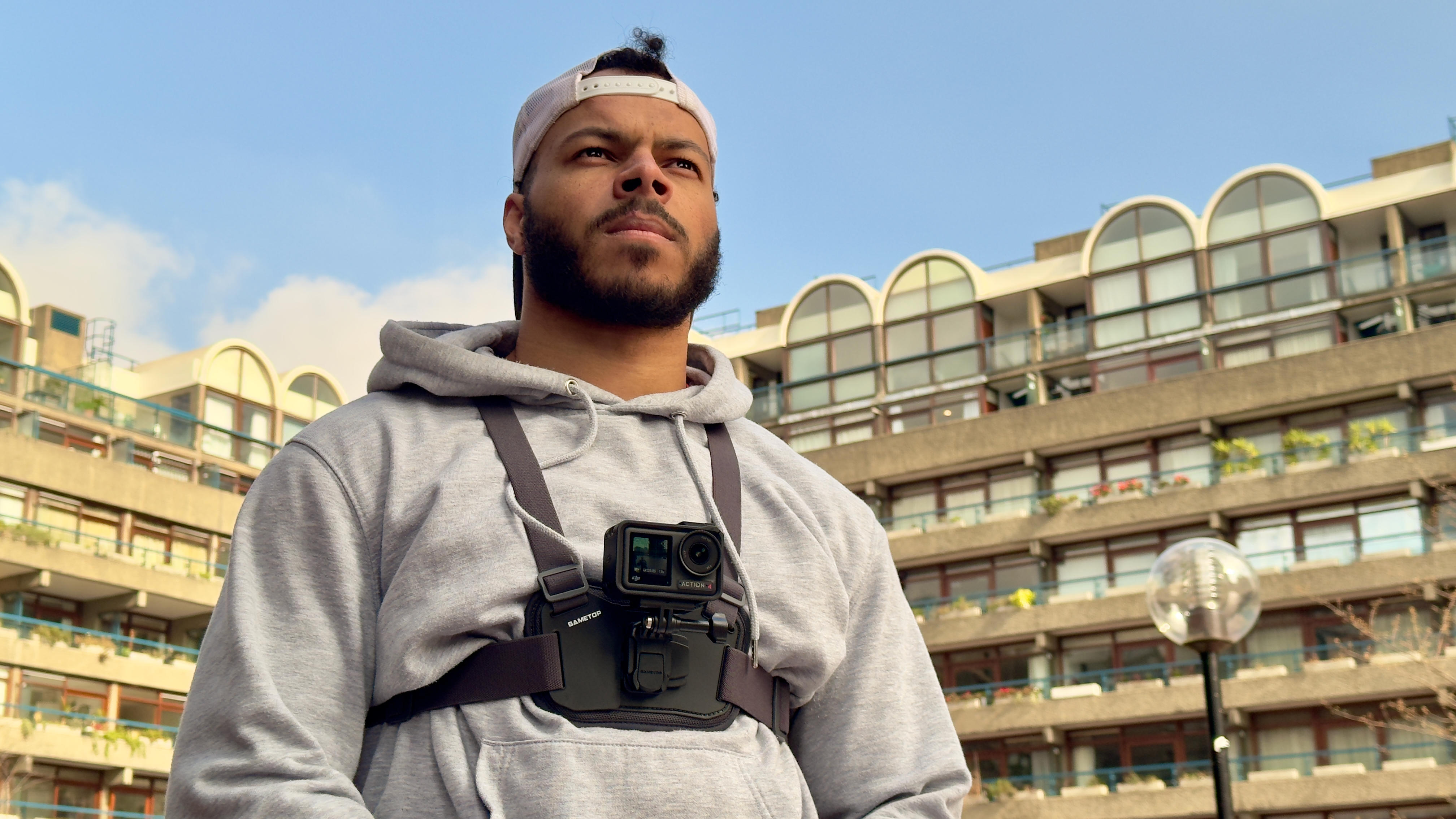
Since its introduction to the market in 2004 the GoPro has become the ‘go-to’ gadget for filming action and sporting activities, and we’re currently enjoying the 12th incarnation of the device with the GoPro Hero 12 Black. DJI released a contender to the GoPro’s action camera crown in 2019 and the latest model in that line is the DJI Osmo Action 4.
I was lucky enough to be lent a GoPro Hero 12 Black and a DJI Action 4 to test out, so I decided to see how both devices compared when filming stuntman Matt Igwe running, jumping, swinging, and flipping through 180º in London’s Barbican Centre.
Before you read on to get more feedback on our action camera head-to-head check out the video below to see for yourself how the competing action cameras fared. At the end of the video is a parkour montage that features additional footage from the DJI Osmo Pocket 3 and the iPhone 15 Pro Max. You can see another head-to-head feature on the GoPro Hero 12 versus the iPhone 15 Pro Max.
Above: check out our comparison video of the GoPro and DJI going head to head
At first glance, both cameras look very similar in relation to shape and size (though the Action 4 is slightly shorter in height. The latest models of both action cameras boast a screen at the front and as well as the back so you can compose your selfies more effectively. When I owned a GoPro Hero 6 a few years back I tended to mount it on a gimbal as this enabled me to make disciplined camera moves such as tilts, pans, and tracking shots. As both the GoPro Hero 12 and the DJI Osmo Action 4 have evolved since I last used a dedicated action camera, I wanted to compare their built-in stabilization modes so I decided to maneuver them by hand instead of using gimbals.
GoPro lent me a Volta which is a handle that gives you a firm grip on the GoPro Hero 12 and it uses a Bluetooth connection to trigger a recording via a tactile physical button. The Volta can also charge the GoPro while you film which extends your shooting time. DJI supplied a rod which again made it easier to move the camera by hand. The rod couldn’t charge the camera like the GoPro’s Volta, but it could extend to 1.5 meters which enabled my camera-operating colleague Tim to shoot low angles of our stuntman Matt performing parkour against a dramatic tower block backdrop.
Oh - if you do need to remotely trigger the Action 4 to record you can do so via the DJI Mimo app and/or via the additional purchase of a wrist-worn Osmo Action GPS Bluetooth Remote Controller. Talking of accessories if you own a DJI Mic 2 you can use it to broadcast high-quality audio wirelessly to the DJI Osmo Action 4, which is a great way to improve the audio production values of your action footage.


When filming stuntman Matt I held the GoPro and the Action 4 side-by-side via their easy-to-grip handles so that both video clips would have an almost identical composition. I also used the touch screens on the cameras to choose the same resolution and frame rate for each 4K sequence, whether that was 30 fps for general action or 120 fps for slow motion sequences.
Both cameras offered a horizon leveling option so that even if I tilted the handles while I ran the horizon would stay level at all times. As you’ll see from the video both cameras performed equally well at keeping the footage gimbal smooth and with level horizons as I chased after the running stuntman.

I’d not used a DJI Osmo Action 4 before but I was pleased that the Action 4 had the same clip and pin connection as the GoPro. This meant that I could easily attach either device to the third-party harness that I’d purchased for the parkour shoot. The GoPro ships with a collection of handy presets for various shooting modes so I set it to ‘Chesty’ when mounting it on the harness for POV shots of Matt flipping 360º through the air. The ‘Chesty’ preset chose a wide angle and 120 frames per second rate so that I could slow down the footage smoothly in the edit and savor the action.
After shooting a side-by-side comparison I gave the DJI Osmo Action 4 to my colleague Tim so that we could film alternative angles of specific stunts. Tim found it easy to manually adjust the Action 4’s exposure so that the stuntman wasn’t silhouetted against the bright sky when he was filmed from a low angle.

Verdict
In general, the GoPro Hero 12 Black and the DJI Osmo Action 4 are neck and neck when it comes to producing gimbal-smooth action footage despite being handheld. Indeed I’d be hard-pressed to differentiate between footage shot on either device when it was filmed in bright daylight.
However when it comes to shooting in low light I found that the GoPro’s footage was less stable than the DJI Action 4’s, though the DJI camera’s s footage was grainer and less sharp than the GoPro’s - so there are pros and cons to both devices in low light locations.
Whilst we thoroughly enjoyed the parkour shoot and were impressed by the performance of both action cameras, a surprise star of the day was our behind-the-scenes camera – the DJI Osmo Pocket 3 as it is a camera and gimbal combined the picture was constantly stable.







